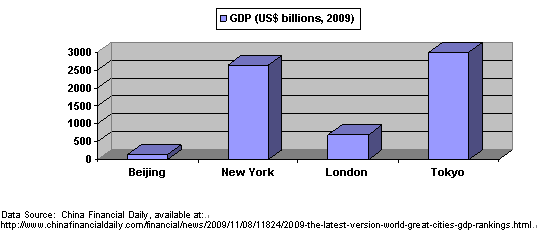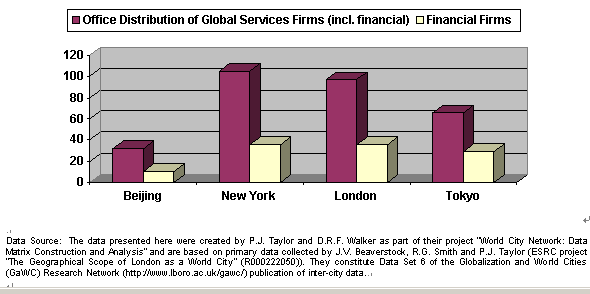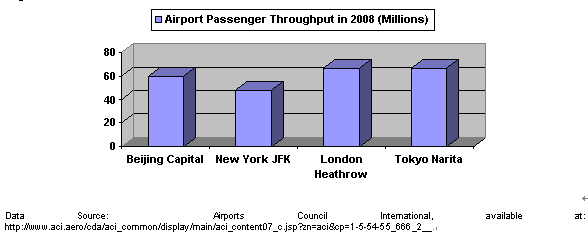所在位置:首页 > 贸促动态 > 市长国际企业家顾问会议 > 往届回顾 > 第九届顾问报告 > 正文
BUILDING BEIJING INTO A WORLD CITY
2012年05月23日 来源:中国国际贸易促进委员会北京市分会
Introduction
2010 marks MetLife’s auspicious eighth year participating in the Beijing Mayor’s International Business Leaders Advisory Council. This year, we are focusing on Beijing’s goal to build itself into “a world city” by 2050. We believe this goal has special significance given China’s impressive emergence from the global economic crisis and clear sense of a society moving forward. At a time when the temptation in many other countries, given the challenges wrought by the crisis, is to close ranks and build protective walls to shield themselves from the world around them, we salute Beijing’s and Mayor Guo’s commitment, through the World City program, to ensure it becomes a central hub in the global economic order. In this paper, we outline several recommendations that we hope will be useful to the Beijing Government as it pursues World City status.
Background
According to the Beijing Government, World Cities must meet six key criteria:
1) First, they have a large economic scale;
2) Second, they provide a service-oriented economy where the world's top companies are headquartered;
3) Third, they have close regional economical cooperation;
4) Fourth, they provide convenient transportation methods allowing people to get anywhere in the world easily;
5) Fifth, they have advanced science and technology, as well as education; and
6) Sixth, they provide good living conditions.
Beijing has already come a long way toward meeting many of these key criteria, and given current growth rates, achieving World City status by 2050 is not difficult to imagine. In 2009, Beijing's GDP was 147.6 billion U.S. dollars, which ranked it as the 25th largest city by that measurement. (Figure 1) By the end of 2009, Beijing's service sector had accounted for 75.8 percent of its economy, approximately the minimum level of a World City. Beijing also is home to a significant number of global advanced producer service firms, including many involved in providing financial services. (Figure 2) The integration of neighboring areas in Tianjin and Hebei into an economic “megalopolis” is well-documented, and Beijing is already a key node in regional commerce. Indeed, the city registered an impressive trade volume of $215 billion in 2009 (a year that admittedly was anomalously small because of the global economic crisis), with imports significantly topping exports. In 2008, the annual throughput of the Beijing Capital International Airport hit 60 million passengers, making it the world's fourth largest airport. (Figure 3) Beijing’s Haidian district and other R&D centers in the city are bustling, and Peking University and Tsinghua University in Beijing are world-class academic institutions.
Beijing has also significantly improved living conditions in the city over the years, through attention to sanitation, housing, and environmental protection. But as Premier Wen Jiabao noted in his report following the National People’s Congress in March, the Chinese Government will place considerable attention on improving equity and social welfare programs for Chinese citizens in the years ahead. To this end, MetLife would like to offer some recommendations to help Beijing meet the sixth World City criterion.
Meeting The Sixth Criterion: Providing a Stable and Sustainable Social Security System
MetLife believes that a stable and sustainable social security system is an important pillar of World City living conditions. A system that provides security for the long-term is absolutely critical to attracting and keeping human capital. There are other important reasons to focus on pension and social welfare spending, as outlined below.
1. Chinese Culture and Tradition
China’s history provides a rich sampling of ideals that serve as a model in focusing on social welfare – and particularly pension reform – to fulfill the sixth criterion. In the Book of Rites, identifying an ideal from China’s “Grand Union” golden age, Confucius noted: “A competent provision was secured for the aged till their death, employment for the able-bodied, and the means of growing up to the young. They showed kindness and compassion to widows, orphans, childless men, and those who were disabled by disease, so that they were all sufficiently maintained.” A focus on pension planning would not only be a forward-looking exercise by Beijing, it also establishes a link to fundamental Chinese traditions.
2. Promoting “Social Harmony”
At meetings surrounding this year’s National People’s Congress, Premier Wen reiterated the call for China to build a harmonious society as a strategic goal to ensure stability while seeking to make good progress in carving out its next five-year growth plan. A stable and sustainable social security system is fundamental to this goal. By focusing on building a productive and efficient social welfare system, Beijing can reduce social pressures from more disadvantaged members of Chinese society, and provide a stable basis for more economic growth.
3. Transition of Economic Development Model
China’s economic development model in the last three decades has achieved great success, but has also led to an imbalanced economic structure, which heavily relies on export-oriented manufacturing and processing industries and investment, and too little on consumption as a factor in new GDP growth. Premier Wen has advocated a reduction of reliance on exports and investments and an increase in consumption, and finding ways to encourage citizens to be less risk-averse and spend more savings on consumption is critical to this task. One of the means to achieve this is to improve the social safety net generally, including healthcare, housing, and pension reform. This will take time, and national efforts to extend this safety net will inevitably be uneven and costly.
With respect to pensions in particular, public spending on pensions is already the most costly expenditure for municipal governments in China. Urban governments annually spend some 750 billion RMB per year in direct pension payouts to 51 million retirees, which reduces opportunities for spending on other social welfare efforts and is a significant drag on public coffers. Yet the management and control of this expenditure – at all levels of government – could be improved. Finding ways to overcome the challenges to financial management of pensions is a national concern, but Beijing can take the lead in moving to a more progressive, transparent, and effective pension management effort in ways that help ease the creation of a more effective social safety net generally, and thereafter ensure that consumption is an increasingly important part of the city’s economy.
Achievements and Challenges
1. Beijing has made significant achievements in establishing a strong and sustainable social safety net and has been a leading city in many aspects nationwide.
a) Beijing is the first municipality in China to establish an integrated pension system [the official term is “an integrated old-age insurance system”] covering both urban and rural residents.
b) Beijing is also a pioneer in providing universal health coverage. It has developed a new type of rural cooperative medical care system (“新农合”制度), a medical insurance system for the elderly and the young (“一老一小”项目), and a medical insurance system for the unemployed with serious illnesses (无业居民大病医疗保险制度). It also has been working on an integrated urban and rural medical insurance system.
2. Beijing has been facing numerous challenges in pension management, which are often common issues nationwide (and worldwide).
a) Suboptimal returns on individual accounts. In recent years, the percentage of average nominal return on the individual accounts was nearly five times below annual wage increases (of over 12 percent) and some 40 percent below those of comparable international social security funds. Most investment of social security funds has not been managed by professional investment institutions, but mainly invested in bank deposits and primary-market government securities for stable but lower returns. More diversified investment tools could be used to address this problem.
b) Limited public trust in the pension system and a sense among the working population that they are only financing current pensioners and not accruing savings for their own retirement. This trust issue has been negatively affected by problems in recent years in the management of pension platforms in other cities in China.
c) Administrative procedures that are complex or change frequently can inhibit participation and make implementation more difficult at the local level. Overlapping and confusing regulatory changes can significantly hamper the development of pension management at both national and local levels.
d) Exclusion of migrant rural workers from the urban pension system. Migrant workers were supposed to contribute to the old age insurance in their home county/province, which they might have left more than a decade ago in the quest to find work elsewhere. Migrants may hesitate to entrust part of their salary to multiple administrative units with responsibilities for regions where they work versus those in their home counties, and this in turn could impact their ability to build up individual pension accounts. The administrative coordination necessary to address this potential problem is substantial.
e) The coverage rate for urban workers in the social security program is relatively high, but the coverage rate for rural farmers is lower. As the trend of urbanization has led to more landless farmers, the government will face heavier pressure in the future.
f) Meanwhile, the system of decision-making, evaluation and analysis in social welfare spending could be made more transparent. For example, the process earlier this year to identify the appropriate size of the surplus of heath care funds proved challenging, and the surplus might affect the benefits and services the health care system provides to the public.
Recommendations
1. Although many of the most significant challenges can be resolved only when nationwide reform policies are settled, Beijing can serve as a pioneer and make great contributions to reform efforts nationwide. As a World City, Beijing’s access to international service providers and “best in class” approaches and problem-solving gives it a particular advantage, and the role of the IBLAC could be central to those efforts. MetLife stands ready to assist in this effort and play a constructive role in Beijing’s efforts to be a leader in social welfare reform.
2. Beijing could take the lead in commending to national authorities that the social security coverage should be extended to uncovered urban workers gradually and eventually to the rural population. While the elimination of the hukou system may still be a sensitive matter, some provision for amnesty in pension management should be introduced as early as possible to allow migrants to contribute confidently to their pensions in Beijing.
3. Transparency is key to achieving optimal policies that drive Beijing’s social welfare policies to achieve world-class standards, and international experience in this regard has much to offer Beijing. Specifically, Beijing might consider exploring options for taking steps in the following areas:
a) Establish an independent and strong regulatory agency to manage municipal regulation of pensions in an effort to help reduce waste and other potential problems related to pension matters.
b) Hire professional fund management companies. A common international practice of managing pension funds is combining in-house and outside investment strategies to diversify risk and leverage specialized investment expertise. The in-house investments tend to focus on lower-risk assets that provide longer-term stability, while the portion given to outside investment managers may gain higher returns through higher-risk assets. Combining these strategies provides a more balanced and effective investment result.
c) Broaden investment channels and develop new investment instruments. While maintaining safety as a precondition, a series of investment activities through multiple channels should be explored. The development of new investment instruments and investment through a variety of channels is conducive to the diversification of risks and a stable growth of investment return.
d) Increase facilities for non-compulsory individual accounts and allow increasing innovation in tools available for self-management of such accounts, albeit under strict regulatory supervision.
Conclusion
As Beijing expands its global footprint and becomes increasingly important as a capital city, a key business hub in East Asia, and eventually a truly global city, the need for attention to the city’s long-term attractiveness to businesses and workers will necessarily require that Beijing develop a world-class social welfare architecture. While the global economic crisis has almost certainly created less appetite for risk in financing pension planning and other social safety nets, unnecessarily conservative handling of these matters will hamper the development of an architecture that is large, sophisticated, and sustainable. Beijing has the capability to be a key player in creating a Chinese pension and social welfare system that is a model for the rest of the world. MetLife, in its capacity as a member of the IBLAC and as a committed member of Beijing’s World City business community, stands ready to assist these important efforts in any way it can.
Figure 1

Figure 2

Figure 3

主办:中国国际贸易促进委员会北京市分会
建设运维:北京市贸促会信息中心
京ICP证12017809号-3 | 京公网安备100102000689-3号


